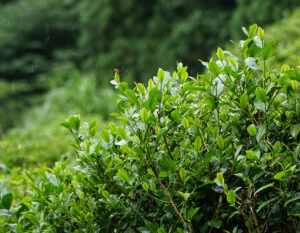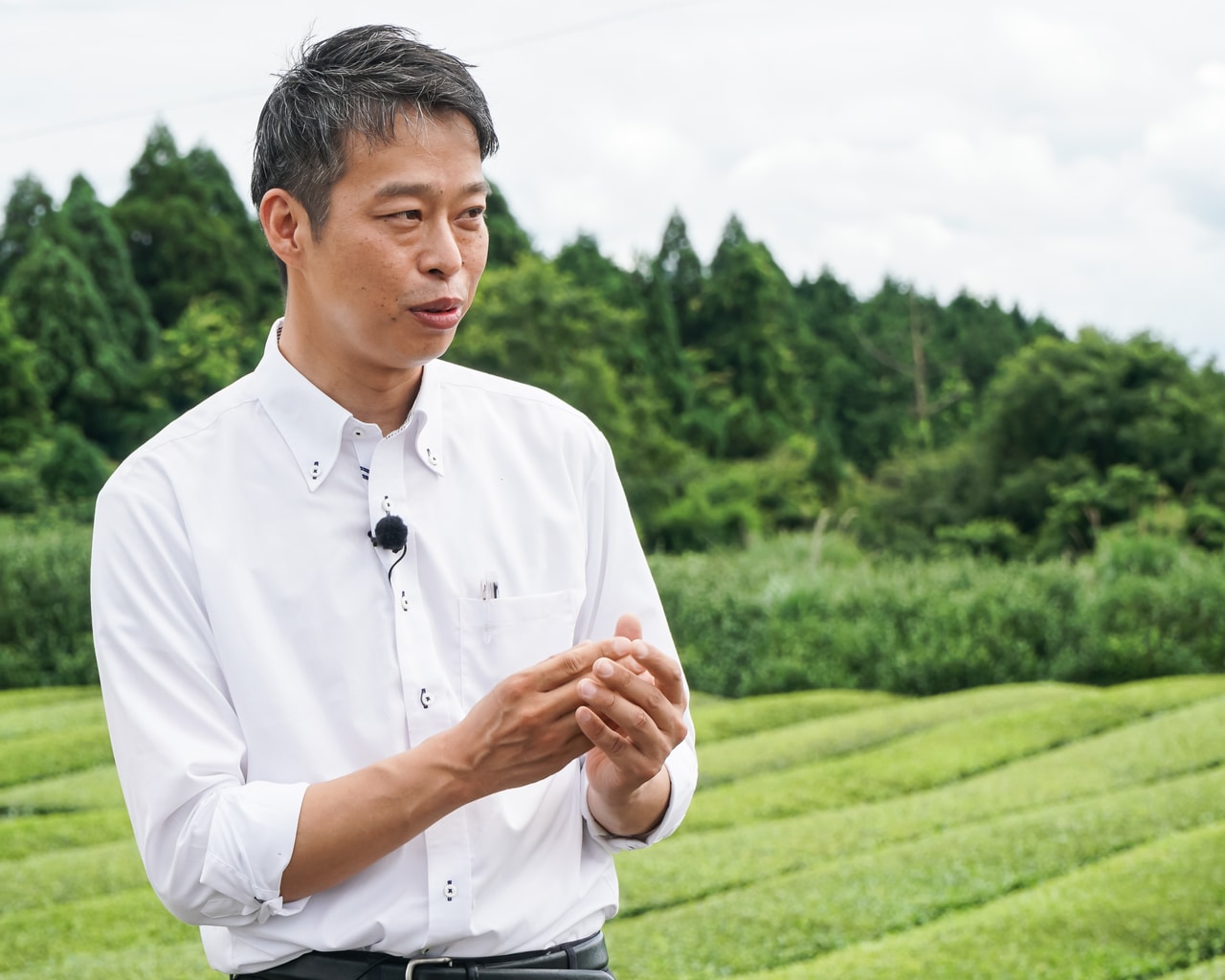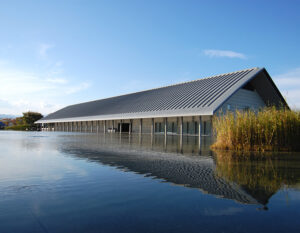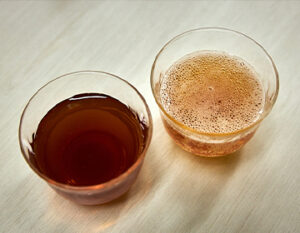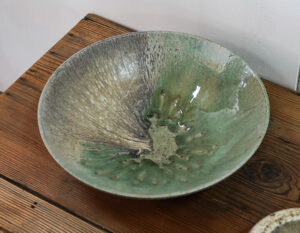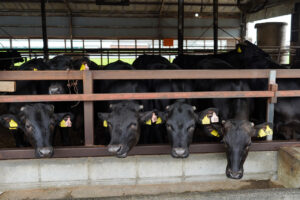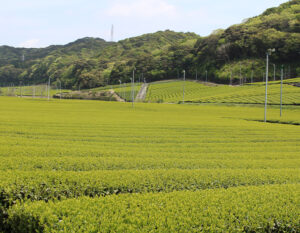Tsuchiyama in Koka City, Shiga Prefecture, is famous for its excellent tea production.
Omicha Marukichi is a long-established tea merchant that has been in this area for over 100 years.
As a specialist in hojicha, it offers a wide variety of hojicha and a wide range of related products.
You are sure to find a cup of supreme quality tea made with carefully selected ingredients and advanced techniques by tea professionals, including a “tea master Judan.
Over the past few years or so, hojicha has shown a steady increase in popularity.The “hojicha latte” style of tea has also become very popular.One of the first people to recognize the appeal of hojicha was Kenji Yoshinaga, representative of “Omicha Maruyoshi,” a roasted tea specialty store in the town of Tsuchiyama, one of Shiga Prefecture’s major tea-producing regions.
Roasted tea specialty store” established in Tsuchiyama, the largest tea production area in Shiga Prefecture
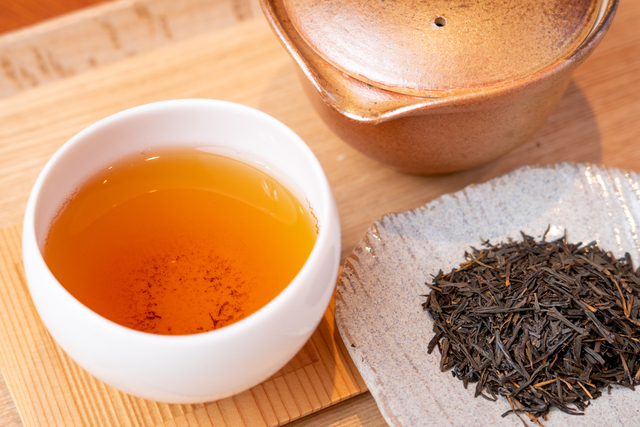
Tsuchiyama-cho, a town at the foot of the Suzuka Mountains, separates Shiga and Mie prefectures.The temperature difference between 35°C in summer and -5°C in winter is ideal for tea cultivation, and the town boasts the largest tea cultivation area and production in Shiga Prefecture.However, Shiga Prefecture ranks 13th in the nation in terms of tea production (in 2020), and is not well known as a tea-producing region.The number of tea farmers, which once numbered about 300, is now down to about 100.

Who is the man behind the “hojicha specialty store”?
In such a situation, Mr. Kenji Yoshinaga of “Roasted Tea Specialty Store Omi Cha Maruyoshi” is struggling to increase the name recognition of Shiga Prefecture-grown tea while devising a marketing strategy not found at other stores and offering high quality tea.Mr. Yoshinaga is the seventh generation of Maruyoshi Omi Cha, a tea wholesaler with over 100 years of history in Tsuchiyama-cho.He is also one of only 15 people in Japan to hold the title of “tea master 10th dan.He is a professional who takes rough tea leaves, which are processed by tea farmers, and turns them into products by sifting, blending (called gougumi), and heating the tea leaves.
What is a “tea master 10-dan”?
I would like to explain a little more about Mr. Yoshinaga’s title of “tea master 10th dan” here.
The 10th Dan of Tea Master is the highest rank in tea judging and appraisal skills, awarded at the National Tea Judging Techniques Competition held once a year by the National Federation of Tea Industry Youth Organization.It is said to be an extremely difficult task in the tea industry, and only 15 people have been certified in the 70 years since the competition was first held.The store’s hojicha tea is a perfect example of this discerning skill.
Bittersweet experience abroad made me realize the potential of hojicha.
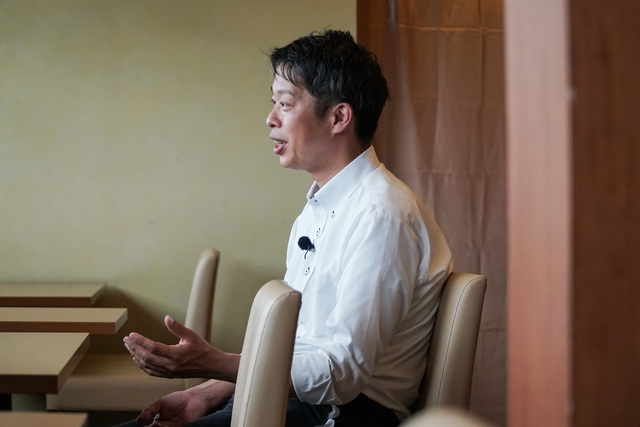
He also wanted to sell the tea produced by his company as “Shiga tea,” but when Mr. Yoshinaga entered this industry around 2000, green tea consumption was steadily declining. Mr. Yoshinaga decided to seek new sales channels and began overseas sales.
Eventually, he began traveling to exhibitions in the United States, Singapore, China, and other countries, but no matter where he went, he did not get the response he had hoped for. The reactions of buyers who tasted sencha were mostly negative, describing it as “unpleasant,” “salty,” “bitter,” and “astringent.” Mr. Yoshinaga then noticed something.
“The hojicha tea I brought along as an afterthought was well received for its aroma and delicious taste.”
He also found that the reactions of young people in Japan were similar. Young people tend to dislike bitterness and prefer teas with a strong aroma. Feeling this, Yoshiyama decided to specialize in hojicha.
Throughout Maruyoshi’s history, the company has always adapted its business to the times. Fortunately, thanks to its accumulated expertise in roasting techniques—gained by taking on requests from other manufacturers—there was no hesitation in shifting focus to hojicha, a tea that emphasizes aroma. In fact, there was a sense of mission that this was a necessary transition.
I could see the way forward.
“I believe that the tea from Tsuchiyama is well-suited for hojicha. Due to the extreme temperature differences in the mountainous region, it takes time for the tea leaves to grow, but this results in a rich tea with a robust flavor and aroma. When roasting tea, the depth of flavor tends to diminish, but the tea from Tsuchiyama retains its flavor even after roasting,” says Mr. Yoshina.
Additionally, his experience as a tea merchant handling both sencha and hojicha has been invaluable in opening a hojicha specialty shop. However, he has decided to shift focus from being a “jack of all trades” to “specializing solely in hojicha.” He explained that this decision made the path forward clear.
At “Hojicha Specialty Store Omi-cha Maruyoshi,” which opened in 2014, the store is filled with various packaged products, and it’s surprising how many variations of hojicha can be enjoyed. Using domestically sourced high-quality tea leaves, they create hojicha using their own unique method, grinding it into a powder and adding honey to make “sugar-infused hojicha.” This product is popular among those who do not have the habit of brewing tea in a teapot, as it allows them to enjoy a delicious hojicha latte.
More than 100 different prototypes, “wide range” is the charm of hojicha.
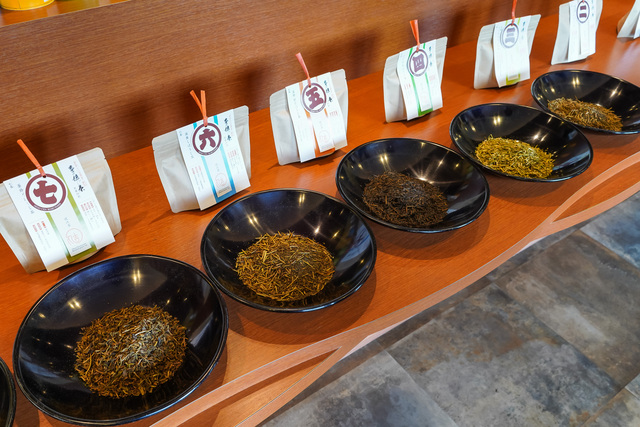
The 10 standard types of hojicha are the result of Mr. Yoshinaga trying out over 100 different types. Even just looking at the tea leaves, you’ll be surprised at how different they look.
For example, the top-tier “Premium Tsuchiyama Hojicha” is made from the first flush buds of the tea leaves, carefully roasted at a low temperature. The green tea leaves appear unlike hojicha at first glance, but when you bring them close to your nose, a subtle roasted aroma wafts up. When sipped, the fragrance clears the nose, leaving a smooth umami flavor on the palate.
On the other hand, the most popular “Ton-gu Hojicha,” ranked fifth, is made from deeply roasted tea leaves with a direct flame, resulting in a dark orange color. It is favored by serious tea enthusiasts who seek a rich flavor, and its top-notch aroma also evokes the essence of hojicha.
As you can see, even though they are all called hojicha, each has its own unique character. Everyone is sure to find a flavor they love.。
Aroma and taste can be freely manipulated by roasting.
By the way, how do you create the various flavors of hojicha? Rather than differences based on the tea variety, the flavors are more influenced by the combination of factors such as the parts of the plant used (leaves, stems, etc.), the time of harvest, the method of picking, and the roasting temperature and duration.
For example, even using the same tea leaves, roasting at a low temperature results in a rich, full-bodied flavor, while roasting at a high temperature produces a lighter, more delicate taste with a fragrant aroma upon the first sip.
Additionally, the ability to capture the aroma of the tea leaves’ veins is a unique characteristic of hojicha. When roasted, the veins expand and release their aroma. The first flush tea leaves have soft veins, so when roasted, they emit a particularly sweet aroma. By understanding these characteristics and experimenting with various combinations, we strive to achieve the ultimate flavor.
Health benefits, such as reduced caffeine levels.
In addition to enhancing aroma, roasting also offers health benefits. Roasting is said to reduce caffeine content and increase pyrazine levels, which may help improve blood circulation.
When people think of hojicha, they may have the image of it being “cheaper than sencha” or “made from roasted old tea leaves,” but the hojicha offered by Omi Cha Marukichi, made from carefully selected tea leaves, is a product that proudly incorporates the extra step of roasting, as Yoshinao explains. The roasting technique that enhances the flavor of the tea leaves by several times is what adds value to the product.
A challenge for the entire production area.New aromatic hojicha” from Tsuchiyama
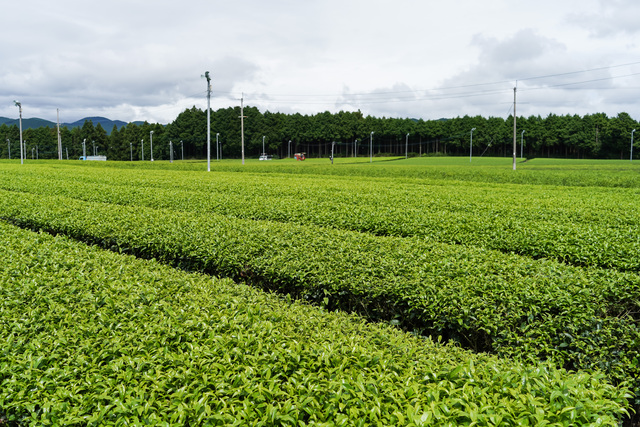
Mr. Yoshinaga has been working on a project to create a “local brand” in collaboration with tea farmers, tea merchants, and agricultural cooperatives in Tsuchiyama for the past four years.
In September 2022, he launched a new brand called “Tsuchiyama Hitoban Houji.”
The key to the aroma of “Tsuchiyama Overnight Hoji” is “wilt.
“Tsuchiyama Iwan Hōji” uses tea leaves that have been withered (ichō). Wilting is a method where harvested tea leaves are left in a well-ventilated area without immediately undergoing roasting, allowing the leaves to wilt and develop a vibrant “flowery aroma (hanaka).” The tea leaves release enzymes to protect themselves, and during the oxidation process, aromatic compounds are produced, which is the essence of this method. Taiwanese oolong tea, which is popular in Taiwan, is also made using this method.
Roasting withered tea leaves to create hojicha is a unique challenge and the core of this project. We aim to introduce a hojicha unlike any other, combining the vibrant aroma of tea leaves with the rich roasted fragrance, from Tsuchiyama. This endeavor was made possible by Yoshinao, a tea master with a 10th-degree certification in tea appraisal, who specializes in hojicha production.
The ‘Tsuchiyama Iwan Hojicha’ has established specifications such as ‘using tea leaves produced in Tsuchiyama,’ ‘using tea leaves with a high aroma that have been withered for over 12 hours,’ and ‘roasted by tea masters and producers in Shiga Prefecture and Tsuchiyama.’ Going forward, under these specifications, producers and tea merchants in Tsuchiyama will create their own unique ‘Tsuchiyama Iwan Hojicha.’
Take advantage of the strength of individuality that only a small scale can offer.Striking out with the pride of a tea-producing region
As mentioned earlier, Tsuchiyama is the largest tea-producing area in Shiga Prefecture, yet the number of tea farmers has decreased to about one-third of its peak.
However, Tsuchiyama Town still has many small-scale tea farmers with unique personalities. Due to their small scale, they can devote time and effort to withering the tea leaves and take the time to create “Tsuchiyama Iwan Hōjī,” and tea wholesalers are also working hard to develop roasting methods that bring out the individuality of each tea farmer. By leveraging these strengths, tea farmers and tea merchants are collaborating to create Tsuchiyama Ichiban Hojicha through a combination of their individual characteristics.
“We are currently experimenting with fermenting tea leaves, but fermentation is very complex. Depending on the climate, humidity, and variety, the possibilities are endless. Just because it works today doesn’t mean it will work tomorrow,”
Despite this, Yoshiyama seems to be enjoying the process. In this ‘Tsuchiyama Iwan Hojicha,’ he is not competing as a single shop but as a tea-producing region, betting everything on hojicha. The challenge of carrying the pride of tea master Kenji Yoshiyama and the potential of hojicha on the world stage is one to watch closely. We encourage you to try the hojicha that the Koka region is sending out to the world with the support of the entire tea-producing region.
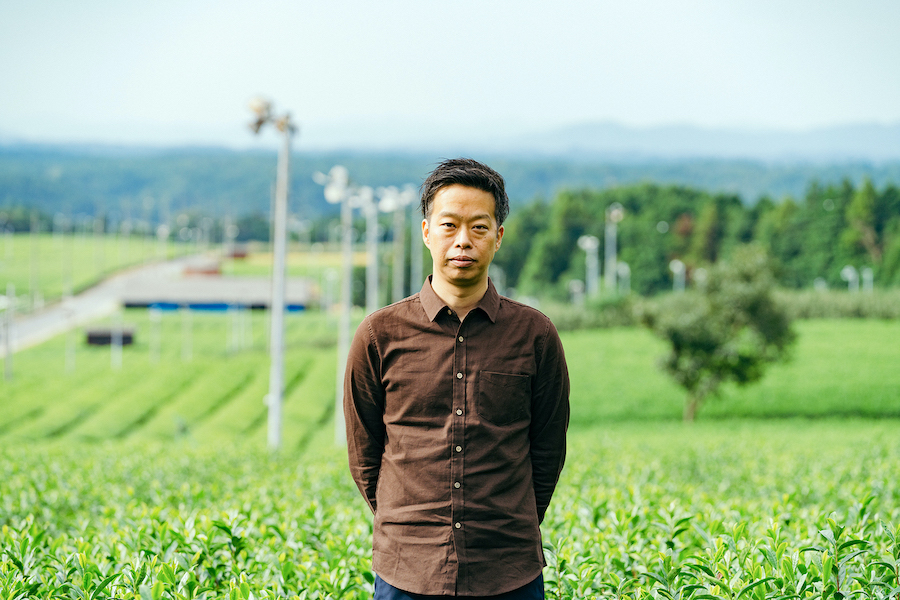
With the diversification of eating habits in recent years, the way we enjoy tea has also changed dramatically.While responding flexibly to these changes, we will redouble our efforts to provide enjoyment and healing through the brewing, drinking, and knowing of tea.We invite you to experience the fragrant and flavorful world of Omi tea.
